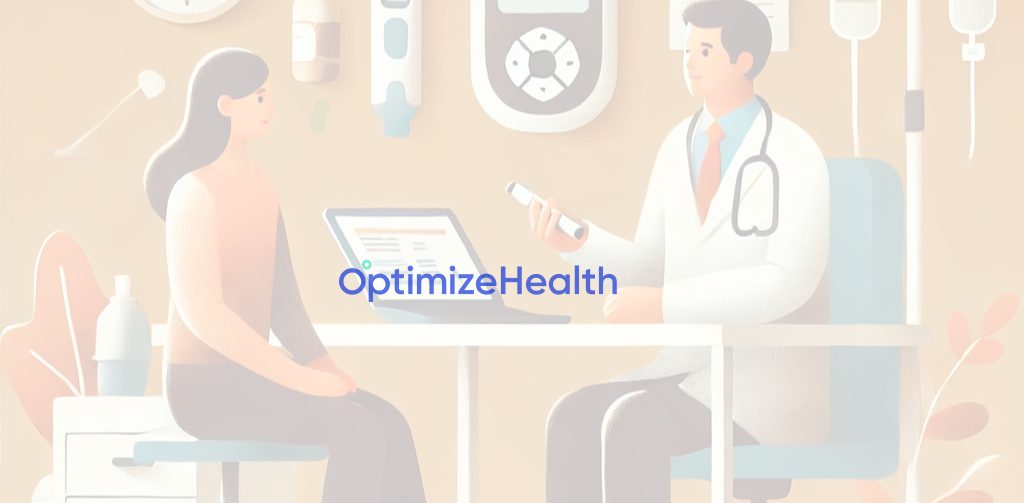Diabetes has become an epidemic with little signs of slowing down. Over 38 million Americans, or nearly 12% of the population, have diabetes and 1.2 million new cases are diagnosed every year. And while nearly 30% of seniors have diabetes, it impacts young people as well. Over 350,000 Americans under 20 have diagnosed diabetes and nearly 100 million people in the U.S. age 18 and over have pre-diabetes.
The cost of diabetes
According to the American Diabetes Association, the cost of caring for diabetes and pre-diabetes in the United States is over $412 billion, increasing by $80 billion in the last 10 years. From 2012 and 2022, US spending on insulin alone has tripled. Medical expenses for those with diabetes is on average 2.6 times higher relative to someone without diabetes.
In 2021, diabetes was the cause of death in over 100,000 cases and a contributing factor in nearly 400,000.
The risks of unmanaged diabetes
Patients with diabetes need to constantly monitor their blood glucose levels, but this is difficult and overwhelming for many patients. However, failure to do so can create serious complications, including heart disease, stroke, kidney disease, vision loss, foot problems, nerve damage, neuropathy, and more.
In addition, lifestyle choices including diet and exercise can have a significant impact on improving or worsening the severity of diabetes. 86% of adults with type 2 diabetes are overweight or obese.
Despite the potential complications, only 50% of people with diabetes meet their blood glucose, or A1C, goals. And even less, 26%, meet their combined ABC goals of managing A1C, blood pressure, and cholesterol.
With adherence to care plans being so low, it’s no surprise that the cost of diabetes has continued to spiral upward.
How remote patient monitoring can improve outcomes
Traditionally, diabetes management has relied on patient self-monitoring using glucometers and as needed, medication. However, patients may not always have the discipline to take readings as frequently as needed or the knowledge to identify small but meaningful trends in A1C readings.
Remote patient monitoring (RPM) can help diabetic patients improve outcomes with more timely interventions. By using cellular glucometers that share data with monitoring clinicians in real-time, providers can detect even small changes in glucose levels. Minor changes in treatment plans and medication can prevent potential complications.
In addition, RPM can improve patient engagement by giving individuals timely feedback and coaching. RPM is more about more than just data. Monitoring clinicians develop ongoing relationships with patients that drive accountability for lifestyle choices. Patients with diabetes may know they should choose an apple over a bag of chips, but without daily accountability the temptation for chips may win out. Patients who know their accountability partner who has access to their blood sugar data and is going to check in and ask about food choices may just go for the apple.
Proactive diabetes care can reduce hospital admissions, emergency department visits, and lower healthcare costs by utilizing preventative at-home treatments.
Clinical research supports the role of RPM in managing diabetes.
There is growing evidence that RPM can have a powerful and promising role for RPM in managing diabetes and reducing A1C. RPM creates a continuous feedback loop for collecting and analyzing data, adjusting behaviors, and modifying treatment to improve outcomes. In addition to connected glucometers, patients with diabetes or prediabetes can manage risk for complications with a weight scale and/or blood pressure device.
Clinical studies show a significant reduction in A1C for patients using RPM and telemedicine interventions relative to control groups. Another study demonstrated that using RPM in post-discharge diabetic patients led to an average decrease in A1C of 67% and decrease in BMI of 58% for patients with a starting A1C of over 9%.
Optimize Health’s own experience using RPM to manage blood glucose has produced results consistent with the clinical research. Diabetic patients have experienced a 11-point reduction in blood glucose measurements in just 2 months and a 20-point drop within 12 months.
RPM has the potential to dramatically shape the diabetes epidemic
Remote patient monitoring is reshaping diabetes care, providing patients and healthcare providers with unprecedented insights and control over diabetes management. By offering real-time data, promoting patient engagement, and enabling timely interventions, RPM can lead to better health outcomes, reduced costs, and an overall improved quality of life for individuals with diabetes. And implementing an RPM program for your patients with diabetes is easier than you may think, even if you are short on staff. RPM can increase your total practice reimbursement while expanding your clinical capacity by using a full-service RPM solution that includes clinical monitoring. Contact us to learn more.
